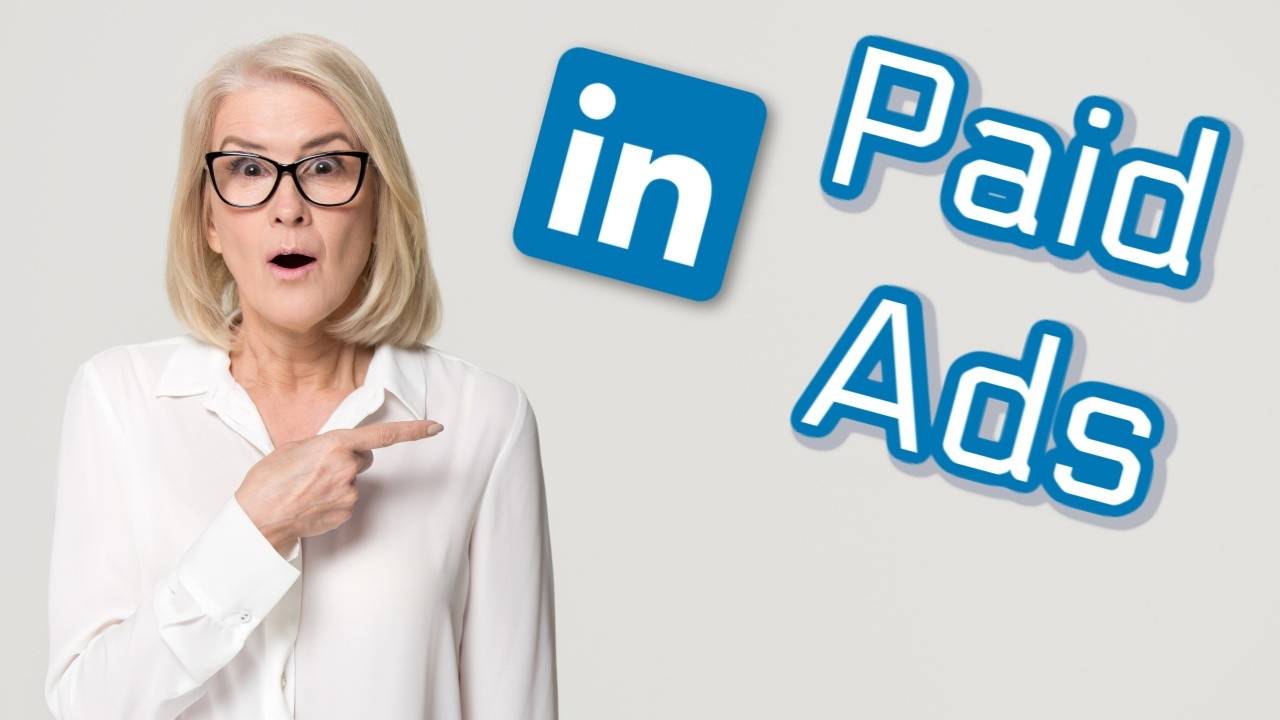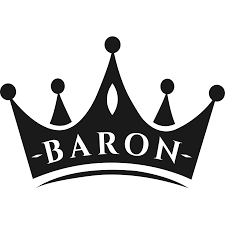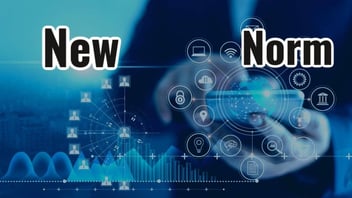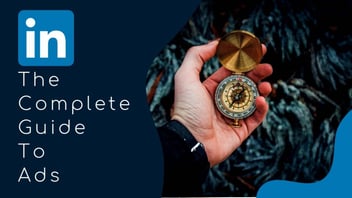
Get the Best out of LinkedIn Paid Ads with These 10 Simple Ways
Facebook and Google Ads are so enticing, and many people think they are the best and maybe the only advertising platforms available, perhaps because they are a little cheaper compared to LinkedIn Adverting. This makes many companies shy away from using LinkedIn advertising services to promote their businesses. I have some good news for you today, – LinkedIn is no longer as complicated as it used to be. With the many updates and simplification of the LinkedIn Ad interface, now you can create your ad and run it in just a matter of minutes.
LinkedIn is a platform commonly used by B2B advertisers. It is a platform that brings together like-minded people, committed to getting the best out of their lives, and organization, and willing to invest their time and money to achieve their goals. By gathering professionals in one platform, LinkedIn allows digital marketing executives to connect with an audience who might be willing not only to engage with you through your ads but also ready to get in business with you if you are the right fit for what they are looking for.
While LinkedIn is majorly for B2B advertising, it is also a handy tool for B2C companies, non-profit organizations, learning institutions, among other organizations. You can not only use LinkedIn to land your next big contract, but also to get the right people to work on that project. If you are hiring, LinkedIn is the best place to find your next reliable employee.
If you don’t know this already, you should note that LinkedIn has become an indispensable marketing tool, and especially in this era, that digital is becoming the new normal way of marketing. Companies are leveraging every tool available in readiness for the physical-to-digital transition. Are you ready to move with the rest? Read on.
Please Subscribe to this Free Sales Navigator Training Course and learn how to leverage LinkedIn to get the sales you want and keep your pipeline full.
The Ultimate Guide to LinkedIn Paid Ads; And How to Get the Most Desired Results
An Overview of LinkedIn Paid Ads
LinkedIn has evolved over the years; it used to be a complicated platform and hard to navigate, but that has changed. And we can only expect it to keep getting better. If you have been using it for advertising, then you can already tell that there are more advertising options than there used to be. Today, with LinkedIn Ads, you can achieve almost all of your marketing goals. LinkedIn advertising allows you to create adverts based on precisely what you desire to achieve.
Some of the main, and commonly used advertising goals in LinkedIn Paid Ads are lead generation, and job applicants. That said, below are other ad goals you can choose from, depending on your marketing goals.
- Brand awareness
- Website visits.
- Video views.
- Website conversions.
With these options available for you, you should create more specific ads, like brand awareness, or job applicants. The LinkedIn algorithm is designed to give you the best results when you are a bit more direct with your objective. And it not only gives you the best results, but it is also affordable.
Why You Should use LinkedIn Paid Ads
LinkedIn has over 500 million registered users. That is one benefit of advertising here, but it is not the only. Below are some of the significant advantages of LinkedIn Paid Ads.
Gives You Access to a Wide Range of Audience
It is not the number audience in LinkedIn that makes this an advantage, but the way LinkedIn advertising is designed to narrow down on your target people. Users on this platform share a massive amount of personal data that is very important when it comes to audience targeting. The information includes their place of residence or location of work, the positions they hold at their places of work, their previous work experiences, their skills, and even their hobbies. With this kind of information at your disposal, you can quickly know how you target your advertisement to maximize your budget. Facebook and Instagram also share this information, but it is not as accurate as it is on LinkedIn.
With LinkedIn paid ads, you get to leverage this information and target your adverts to the right people. If you are looking to hire new employees, the audience information shared on LinkedIn will make it easy for your advert to reach only the people with the skill set you are looking to add to your company.
Accurate Audience Targeting
Things get better with LinkedIn advanced targeting option. When you are creating your new ad, you can get extra-specific with the kind of people you want your advert to reach. Some of the ways you can target users include their location, their job titles, company names, their industry, education levels, and professional interests, among many others. With LinkedIn audience targeting, you can never go wrong with the budget. With accurate and up-to-date personal information shared by LinkedIn users, you can rest assured that your advert only reaches the people that matter.
Total Control Over Your Ad Budget
This is not a LinkedIn-only advantage; it is a benefit attached to all other social media marketing platforms that you can use to advertise your business. In the traditional ways of advertising like the newspaper ads and TV and radio broadcasts, you are obligated to an upfront payment of your ad fee, which gets out of your control immediately you receive the payment confirmation. You cannot in any way control what happens after that. You are not assured of results, and if you do not like the results you see, you can not alter the advert. If you must, you just have to pay for another ad. That sounds expensive, right? It is because it is costly.
With LinkedIn paid ads, you can customize your ad budget, you can change it, and you can stop it before it is finished, depending on the performance of the advert. This is a huge advantage. You are continually active in your campaign, which gives you an upper hand in ensuring that the campaign performs to the best.
Personalized Connection with Your Audience
Even if not for any other reason, advertising on LinkedIn gives you a personalized touch with your audience. With Sponsored InMail, your business can send customized email messages to people that only match your needs. You can use InMail advertising to increase your lead generation or get the right candidates for your next hiring process.
Thinking of getting started? Here Is A Limited Free Offer On Unlimited Coaching And Courses.
Types of LinkedIn Paid Ads
Just like Facebook, Instagram, and other social media platforms, LinkedIn offers different ad types and formats from which you can choose. Again, the overall ad objective is what determines the ad type and format you choose. All LinkedIn ad objectives are supported across almost all types of ads.
Here are the different types of LinkedIn ads.
LinkedIn Sponsored Content
Sponsored ad content is the type of LinkedIn ads that feels and looks native to the LinkedIn platform. They appear to have been created from the company’s feed, like the organic content. They can be targeted across desktop, tablet, and mobile devices. Sponsored ad content includes a single image ad, video ads, carousel ads, and single job ads. Each of these formats has specific requirements.
Direct sponsored content is the type of ads that do not appear first from your business page feed. It allows you to create adverts that promote your products or sponsor other content on behalf of the page without cluttering on the page timeline. Direct sponsored content can also be used to showcase your page without having to first appear on the page timeline.
Sponsored content can be used with the following objective-based advert options
- Brand Awareness
- Lead Generation
- Website Visits
- Engagement
- Video Views
- Website Conversions
- Job Applicants
LinkedIn Text Ads
A LinkedIn text ad is the type of advertising that features a headline, an image, and a very brief description of the campaign. Text ads are quite limited in space as compared to other LinkedIn types of ads. Text ads are featured on the LinkedIn sidebar and operate on the pay-per-click impression basis. Paid text ads are the simplest, and maybe the most annoying types of social media advertisement, but they are still quite useful in creating brand awareness, and lead generation – reaching the right target audience.
LinkedIn Sponsored InMail
How many times have you logged into your LinkedIn account and found like five or ten random messages? These usually are, on many occasions, from a marketer using the LinkedIn sponsored InMail ads. You can come up with a list of contacts you would like to reach through the InMail campaign. With this list and the message you want to pass, LinkedIn sponsored InMail allows you to mass-deliver those messages to the inboxes of the contacts you curated. Depending on what you want to achieve from the ad, you can use sponsored InMail to invite prospects to an upcoming event or try to spark a connection that may lead to an inbound call. The results of this type of ad are measured using the number of responses or actions taken by your recipients.
LinkedIn Dynamic Ads
Dynamic Ads are personalized ads designed to reach LinkedIn members using their shared personal data. Members can choose to allow or deny advertisers from tailoring their customized ads to them. LinkedIn created this type of advertising to use a person’s profile photo, the company they run or work for, or their job title to create personalized ads for them. Dynamic ads allow advertisers to use all levels of full-funnel marketing. You can promote a product or service or the company page. You can also choose to boost a job posting or downloads from your business page. LinkedIn dynamic ads are also a perfect option for driving traffic to your website or an e-commerce shop via spotlight ads that appear on the LinkedIn newsfeed.
Since this is a personalized ad type that sends customized ads to individuals, it is designed with creative set templates and auto-translation options that make personalizing easy. Some of the best ad formats that will work well with dynamic ads include brand awareness, web visits, job applicants, and engagements.
10 Expert Tips to Help Reap the Best Results Out of LinkedIn Paid Ads
After understanding the meaning and advantages of using LinkedIn paid ads, let us now take a closer look at some of the best and practical expert tips to help you get the best value for your money.
Do You Want to Become an Expert in Digital Marketing? Sign Up for This Free Sales Success Courses and Coaching .
Start with Split Testing
This is the testing stage where you begin before narrowing down to an advert that actually works for you. Despite the products or services you intend to promote, your target audience, or the budget you have put in place, run multiple ad headlines with a different call to action buttons, and various creative visual layouts. Monitor these ads closely and regularly optimize them for performance. The monitoring allows you to identify the ad type that works best for your company. Once you have identified the ad type that brings the best results, you can now focus all your efforts, money, and time towards that type of advertising for the best results.
LinkedIn allows advertisers to run multiple ads in one campaign, take advantage of this option. This option lets you understand what matters to your audience and what does not if you need more or fewer text, large or smaller images, sponsored InMail, or sponsored content. If you this stage right, you will never have to struggle with understanding your audience, or your advertising options.
Define Your Target Audience
If you are an expert marketer on Facebook, Instagram, and other platforms, it is good you understand that targeting on LinkedIn is a little too different. Facebook lets you target your audience according to what they love, their social life, and their friends, in LinkedIn, you focus your ads according to the audience’s professional occupations. For example, LinkedIn can tell you that 30,000 registered LinkedIn users in the U.S.A do graphic design. From this number, the platform can further narrow the data down to the number of degree holders among the 30,000 graphic designers, and so forth. LinkedIn can also tell you among these users who own their signage companies, who manage design studios, and so forth. It will be a bad idea to target all graphic designers in this particular area. If you are selling sign manufacturing equipment, for example, the best thing is to focus your ad to graphic designers who own signage and branding studios or those who are in a decision-making position in a signage company.
LinkedIn has many targeting options that range from industry, company name and company size, job title, gender, and age, among others. A defined targeted ad campaign will most probably be successful. Also, note that not all companies depend on the seniors to make vital decisions, some firms have their major decisions coming from each department, which means they are not seniors who make all the decisions in that company. This comes back to the importance of understanding your audience before launching the campaign.
Make Your Content Relevant and Engaging
Running generic campaigns can save you time. They can also give some good results. But creating customized content for each campaign can do far much better than copied content. Create content that speaks directly about the job role, the products you are selling, or the brand you are promoting. If you run a company that deals with corporate event management, do not run campaigns with vague information about corporate events. Tell your audience in detail why you are the best in the corporate event industry, and why someone should hire you. Being specific with the content you create makes you stand out in the pool of a million other companies offering the same services as you.
As you concentrate on being relevant, also ensure your content is short and punchy. There are two reasons why you should try your best to keep your text short; many people skip long passages, and two, LinkedIn will cut your long text with a ‘read more’ link. Again, very few people click on that link. If you did not make your point before the cut-off, it is so likely that your message will not reach the targeted audience. On average, ads with high-resolution images and lesser text perform much better than ads filled with text. Alternatively, ads with videos perform twice as better as those with pictures.
Whichever ad type and objective you choose, try as much as you can to create relevant and compelling content. There is no need to talk about other events in your ad because they do not matter. Speak about corporate events and your services only. That is what converts.
Put as Much Effort on Your Landing Page
LinkedIn advertising is not as cheap as other platforms where you can run an ad with as low a dollar per day. You should make every cent count by ensuring that everything in your ad is perfect. If someone has seen your advertisement and is interested enough to click on the call to action button, make sure they end up on a friendly ground. Make your landing page as easy to navigate as possible – be it a website page, a blog post, or an e-commerce shop. Make sure there is enough information on that page that answers all your new visitor’s questions and has a great call to action that makes it easy for your visitor to complete your ad objective. Whether you want them to fill a form, make a purchase, or download an app, make it a walk in the park for them to do so. This will not only bring good ad results, but it will also lead to numerous referrals to your landing page.
Allocate A Reasonable Budget to Your Ads
Advertising on LinkedIn costs more than any other social media platform and google. Better because every cent you use on LinkedIn counts. If you target a certain group of people in your ads on LinkedIn, that is exactly where the platform sends your ads. If you are starting advertising on LinkedIn and you are on tight budgets, consider splitting your ads in bits, or shortening the ad run period. You can split your audience by location or age to meet your target within your budget.
How much does LinkedIn advertising cost?
LinkedIn gives you the chance to customize your ads spends and bids, making it a little hard to standardize its advertising charges. However, most companies pay an average of $5.26 per click, $6.59 for every 1000 impressions, and $0.80 per sponsored InMail send.
Even with this average cost, LinkedIn allows companies to bid a minimum of $2 for cost per click campaigns as well as cost per 1000 impressions.
What Determines How Much You Spend on LinkedIn Paid Ads?
According to LinkedIn, your Targeted Audience, the Bid you select, and Ad Relevance Score are the main determinants of the amount you spend on LinkedIn advertising.
LinkedIn has very many advertisers promoting products and services similar to yours. In order to get ahead of them (your competitors), you have to do a perfect job in targeting. Your preferred audience will determine whether you stay ahead of your competition, remain average, or remain behind. If you choose an audience with high demand, you definitely expect your budget to go high. Every advertiser on LinkedIn is also fighting to get to them. Choose your audience depending on the budget you have allocated for that particular project.
Your Bid also affects your LinkedIn ad spending. In as much as you will never exceed your Bid, you will pay a portion of it. LinkedIn ad auction is designed to charge one cent more to the auction winner than the next highest Bid.
The other factor, Ad relevance score, plays a huge role in LinkedIn advertising costs. The interesting part is that the higher your ad relevance score gets, the lower your ad spending goes. LinkedIn wants to run ads that have a high relevance score because they tend to solve LinkedIn members’ problems. The platform wants to serve user relevant ads that are equally engaging.
Never Rerun an Ad
Rerunning an ad is the biggest mistake you can ever make in LinkedIn advertising – you will not be penalized for it, but your money will be.
Consider changing your ad in terms of images and text every time you run it, even when you are advertising the same thing. By doing this, you make sure that your ad does not become background noise to your audience. Once an audience sees the same ad twice, and three times, they tend to become blind to it. But if you keep changing it, it will always be new to your audience, even if it is for the same objective. Change your wordings, your images, and your videos, change the link description as well. Let the ad appear as if it is running for the first time.
Track Your Ad’s Performance
You must keep track of your ad performance irrespective of the platform. Tracking the success of your active ads allows you to decide which ad needs to rerun, and which one does not. As mentioned earlier, you run multiple ads so that you can choose which one best works with your audience, but unless you keep a close eye to its performance, you will keep repeating the same mistake over and over. In order to ensure you never lose any important data relating to your campaigns, set up conversions within your ad manager account. By doing this, you will keep track of all activities going on in your ad, even those outside your campaign objective. For example, if someone decides to visit your e-commerce shop instead of the preferred landing page, that still is very important information that can help you in the future.
Analyze Your Ad Results and Learn from Them
It is not always the failures that we learn from; even when we are right, we can take learning from our success. And yes, it is okay to fall in order to rise again stronger. Taking note of specific details like the type of audience that visited your ad the most, how many people from within your locality clicked on your ad, are some of the major learnings you can take from a campaign. This will help you in the future as you set up another advertainment.
Final Thought
The world is moving really fast towards the digitalization of everything, and what will be most affected is the marketing part of the world. Doing things right is what will get your company safely across the bridge. LinkedIn is one of the major platforms that can propel your company to higher levels, both in sales and influence. Reading this article and doing it will give you a push in the right direction. What more could anyone ask for other than using their ad budget to the fullest?





